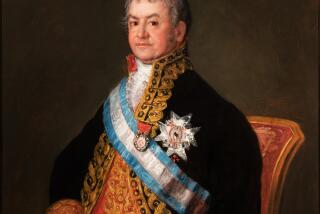LA CIENEGA AREA
Willem de Kooning’s career is nearly all here in a show of 22 works on paper that skip lightly across 45 years of his celebrated painting. More often than not, the figure is present, too, emphasizing De Kooning’s reputation as the only major Abstract Expressionist who clung to human images.
It’s no surprise to find that the earliest drawing shown is also the most realistic, but even in this “Seated Man,” De Kooning is after more than a conventional representation; he takes Cubist liberties with form, squaring off an arm and simultaneously looking at the body from multiple viewpoints. Apart from a single pastel, which fills a rectangle with richly suggestive volumes, the other works represent a fluid interplay of abstraction and figuration in black-and-white drawings. Within the flow is an impressive range of expression.
There’s De Kooning at his most lush and sensuous, disbursing a man’s form in soft, puffy shapes and investing the whole with a floating sensation. De Kooning the Diabolical makes women into grotesque witches, while De Kooning the Dreamy shows you palpable tenderness. It’s hard to tell whether line follows mood or the other way around, but it’s plain that the artist understands the connection. He can reduce a body to the essentials of a few calligraphic ink strokes, tie it in nervous knots like a twitchy mass of barbed wire or soothe it into a state of blissful reverie. No wonder his impact has outlasted the movement that both made him famous and reviled him as a heretic. (Margo Leavin Gallery, 812 N. Robertson Blvd., to Feb. 1.)
More to Read
The biggest entertainment stories
Get our big stories about Hollywood, film, television, music, arts, culture and more right in your inbox as soon as they publish.
You may occasionally receive promotional content from the Los Angeles Times.










